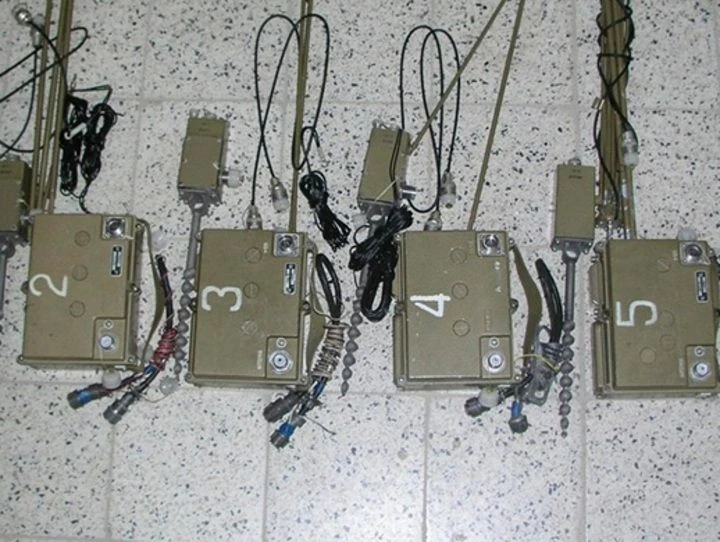Small drones have emerged as a significant threat to armoured vehicles deployed on the Russian-Ukranian front lines, and they frequently outperform artillery and other conventional armament in terms of effectiveness. At the same time, drones have proved virtually impervious to the present air defence systems.
The aerial danger is forcing engineers and the military to think of new ways to fortify armoured vehicles. Metallic visors (Grills, mangals in Russian) were developed to protect armoured vehicles against helicopter attacks.
These “enhanced” designs aren’t the only technical advancements in armoured vehicle protection making news.
Drones on Mute – Putin’s “Lesochek”
President Putin of Russia assessed the year in a December news conference where he mentioned one such development that has already breached the air defence zone.
Electronic warfare (EW) equipment designed to jam hostile drones will be installed on Russian tanks, according to the Russian president. Putin responded to a journalist’s inquiry regarding providing new armaments to the military by stating, “‘Lesochek’ (Little Forest) is a new system that is, to the greatest extent feasible, integrated into every armoured vehicle.

The Russian military brought up the issue of safeguarding tanks and other armoured vehicles against drone assaults during the Syrian campaign. Numerous other inventions debuted here, along with Lesochek and other EW systems. In 2018 and 2019, it was initially reported that this system was used in the Syrian combat zone.
When air defence operations commenced, the system underwent testing under new conditions; after necessary adjustments, it was manufactured in large quantities and deployed by the armed forces.
The greater the prevalence of such systems, the higher the battlefield survivability of vehicles.
“Lesochek” was later modified to jam drone control signals. When an enemy copter approaches the target, the complex jams the control signal, allowing the drone to veer off course and fall without causing major damage.
During the winter operational and combat gathering in 2021 (held at the Orenburg region training ground), Colonel Nikolai Fedorov, the head of the Central Military District’s EW service, noted that “Lesochek” significantly improves the protection of vehicles and personnel from radio-controlled explosive devices during marches and in parking areas.
Triton Disrupts Waves
There are other technologies besides “Lesochek” that are meant to keep armoured vehicles safe from drones. Two very small EW devices -the “Triton” and the “Volnorez”- can be put on armoured or military vehicles.

Radio frequencies spanning from 170 megahertz to 7 gigahertz are blocked by “Volnorez.” This effectively jams drone control signals within a 600-meter radius. The “Triton” system, on the other hand, generates active interference over a 400-meter radius at frequencies of 800 and 900 megahertz.
The primary mission of “Volnorez” systems is to defeat First Person View (FPV) drones. An FPV drone pilot often aims for the tank’s weakest point, such as the side or rear. Ideally, the purpose is to cause engine damage and/or ammo explosion. If the signal is intercepted during the approach, the drone may collide with a visor or another place where the impact will be less severe.
Invisibility Cloak
EW systems are not the only domestic development intended to enhance the survivability of the Russian armoured vehicles from the air defence.
Kits to reduce visibility are basically “covers” made of specialised fabric that reduces the visibility of armoured vehicles.
Kits of Means to Reduce Visibility, called “Nakidka“, appeared first on the T-90M tanks. These kits are designed to camouflage tanks from radio-electronic reconnaissance and the means of destruction that use thermal imaging homing heads. One of the internal layers of the fabric is responsible for shielding thermal radiation, preventing it from escaping outward.
Thanks to this, the external surface of “Nakidka” has the temperature of the surrounding environment. This makes the tank or another object invisible to thermal imagers. The kit also includes a radio-absorbing layer of fabric that reduces the reflection of radio signals.
The cloak protects the tanks from drones using thermal imaging detection systems and from the attacks of modern ATGMs (anti-tank-guided missile systems).

Another development aimed at protecting vehicles is the radio-absorbing material called “Ternovnik,” which also reduces radar visibility. Judging by the samples presented at the Army Forum 2023, the system can be used independently or in combination with “Nakidka.”
The “cover” might also make it difficult to identify the vehicle visually. To accomplish this, the kit can be painted in camouflage colours or disguised as grass or moss.
In the special operation zone, the “Nakidka” and “Ternovnik” kits have been observed on the most modern tanks, such as the T-90M and T-80BMV. The “Nakidka” kit can also be seen on vehicles of the operational-tactical missile complex “Iskander-M.”
The visibility reduction kits can be used with mobile EW installations. In principle, this will enhance the chances of survival even further.
The Future
However, every defensive measure has limitations, and deploying additional defence methods does not guarantee that all Ukrainian drones will now fall.
In the future, advanced drone defensive systems may be used on other vehicles, such as automobiles. Operators of FPV drones frequently chose such vehicles as targets, knowing tank armour can be difficult to penetrate.
As a result, mobile electronic warfare complexes will most certainly dominate military ideas in the future. This is especially true as sniper rifles and machine guns have now increased.
In this regard, Russian developers are far ahead of their foreign competitors, who may not have the opportunity to test their innovations in the field.
